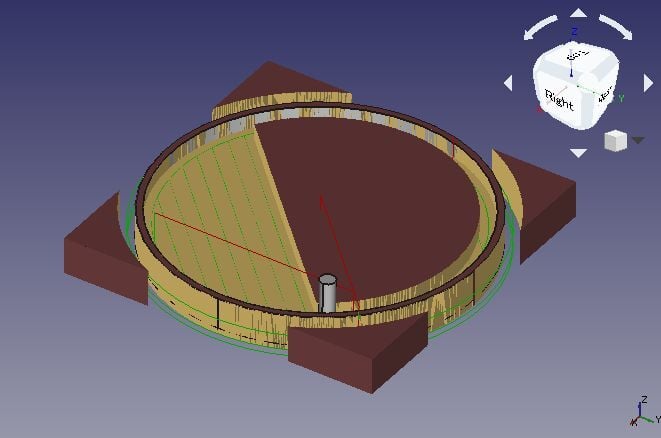
Using sustainable design principles in architecture is important in modern architecture, as it helps reduce environmental harm and improve building performance. Currently, architects are focusing on the best sustainable building materials that support energy efficiency, reduce waste, and promote healthier living environments.
Selecting environmentally sustainable building materials is ideal for architects working on either home or large commercial buildings, as it can help reduce long-term costs and carbon footprint. Let’s explore the principles, tools, and material innovations that support eco-friendly sustainable building materials for the future of architecture.
Interested in learning more about the best design principles and enhancing your overall architectural skills? Read more on BIM for Architects.
Principles of Sustainable Design

The Sustainable building design principles mainly focus on reducing the negative impact of construction on the environment and improving the health and comfort of occupants. These principles include energy efficiency, water conservation, natural sustainable building materials use, and promoting renewable energy.
Below are some major sustainable design principles in architecture:
- Site planning: This involves designing around natural elements like sunlight and wind for better energy use.
- Material selection: This is the choice of low-cost, sustainable building materials that are durable and recyclable.
- Energy efficiency: This is where architects incorporate solar panels, insulation, and smart systems to reduce power usage.
- Indoor environmental quality: Involves ensuring the use of proper ventilation systems and using non-toxic materials for better health.
The above environmentally sustainable design principles help create functional and responsible spaces.
Need for Sustainable Architecture Design
There has been a significant need for sustainable building design principles in modern construction, mainly due to the rising environmental crisis and urban expansion. Traditional building methods mostly lead to pollution, excessive waste, and high energy use.
Below are some of the main things that sustainable architecture focuses on:
- Reducing resource use: This is done by choosing renewable or recycled materials.
- Minimising waste: Using materials that create less construction and demolition waste.
- Improving energy performance: This is where the building designs are made in a way that reduces the need for heating or cooling.
The above goals support long-term cost savings, healthier indoor spaces, and stronger structures. More architects worldwide are adopting sustainable design principles in architecture to build for future generations, and this is because of the major climate change concerns.
Eco-Friendly Building Materials

Making the right eco-friendly sustainable building materials is one of the most important steps for architects in creating green buildings. Below are some commonly used sustainable architecture building materials in the modern world:
- Bamboo: This is a fast-growing, strong, and flexible material which is used for floors, walls, and roofing. It is one of the most sustainable building materials because of its renewability.
- Recycled steel: This is an ideal material that can be used for framing, as it saves energy compared to producing new steel.
- Cork: This material is used for flooring and insulation. It is harvested from the bark of cork oak trees without harming them.
- Sheep’s wool insulation: This is a natural alternative to synthetic insulation, as it regulates temperature well.
- Rammed earth: It is a strong and traditional material that uses compacted soil, hence reducing the need for processed materials.
All the above environmentally sustainable building materials also help buildings last longer while maintaining indoor comfort. Using these natural sustainable building materials also reduces reliance on chemicals and synthetic substances.
Lifecycle Assessment (LCA) in Material Selection
As an architect, choosing the best sustainable building materials, you should conduct a life cycle assessment of sustainable building materials. LCA is a process that studies the total environmental impact of a material from its production to the time it should be disposed of.
The life cycle assessment process includes:
- Extraction: The impact of sourcing raw materials on the environment.
- Production: This involves the energy and pollution created during the manufacturing of the materials.
- Transport: The emissions generated while delivering materials to the construction site.
- Use: How durable and how easy it is to maintain the material during the building’s life.
- Disposal or reuse: These are the available waste and recycling options that can be used after the demolition of the constructed building.
Understanding the life cycle assessment of sustainable building materials allows you to make smarter choices. Additionally, comparing not only helps you know about the material’s performance but also its environmental cost.
Innovative Technologies in Sustainable Materials
In the modern day, technology plays a major role in creating architecture sustainable building materials that are stronger, smarter, and greener. The following are some innovations which are changing the future of sustainable construction:
1. 3D-Printed Concrete
The 3D-printed buildings use precise layers of concrete with little waste. This incorporation of 3D printers lowers the time of construction and reduces the use of heavy machinery. Some mixes of concrete also use recycled or low-cost sustainable building materials, cutting down on cement use.
2. Self-Healing Materials
Self-healing materials can repair small cracks automatically through bacteria or chemical reactions. They help extend the life of structures and reduce the need for repairs, saving costs and materials.
3. Bio-Based Composites
Bio-composites, which are made from organic sources like hemp, flax, or corn, are strong and lightweight alternatives to plastics and fibreglass. They are biodegradable and require less energy to produce.
Using such innovations ensures that future buildings are smart and aligned with environmentally sustainable design principles.
How Novatr Helps Architects Master Sustainable Design
Learning how to apply sustainable design principles in architecture requires more than theory; you need hands-on experience with materials, tools, and technologies. Novatr offers modern architects access to real-world, project-based learning that focuses on both sustainable building design principles and new innovations.
Here’s how Novatr supports architectural professionals:
- Skill-based courses: These courses mainly focus on green building strategies, energy modelling, and LCA tools.
- Computational design modules involve modules that help learners create optimised and environmentally friendly structures by incorporating modern technology.
- Collaboration with experts: Learners get opportunities to work on real-world projects with top firms and sustainable design mentors.
- Access to the latest tools: Architects can access parametric design software to BIM platforms that support eco-conscious planning.
For more information on the best environment friendly architectural practices, read on 15 sustainable building materials for a greener future and sustainable construction.
Conclusion
The future of architecture depends on the thoughtful use of materials that support both people and the planet. By applying sustainable building design principles and understanding the full impact of every material, architects can create buildings that last longer, use less energy, and stay in harmony with nature.
Innovations such as 3D-printed concrete and self-healing materials are leading the way forward. As sustainable design continues to grow, architects must stay informed and trained. By learning from platforms like Novatr, professionals can lead the change towards a greener, smarter world in architecture.
To enhance your skills and learn more about sustainable ways of incorporating architectural designs, consider exploring the courses offered by Novatr. The courses offered include Master Computational Design Course and BIM Professional Course for Architects.
Visit our resource page to get more information.
Was this content helpful to you



.jpg)







